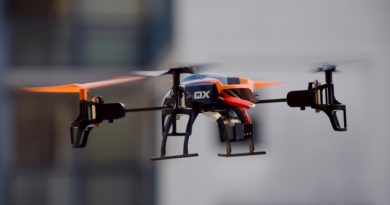Dubai’s Transportation infrastructure and developments
Dubai is known for its towering skyscrapers, luxury shopping, and opulent lifestyle. But there’s one aspect of the city that often goes unnoticed: its transportation infrastructure. In recent years, Dubai has made significant strides in developing and modernizing its transportation system, making it one of the most advanced and efficient in the world. From driverless metro trains to flying taxis, Dubai is quickly becoming a global leader in transportation innovation.
One of the most notable developments in Dubai’s transportation infrastructure is the Dubai Metro. Launched in 2009, the metro system is the longest fully automated metro network in the world and boasts a ridership of over 400 million passengers per year. The metro system operates on two lines, the Red Line and the Green Line, with plans to expand to a total of seven lines by 2030. The trains are driverless, which not only increases efficiency but also enhances passenger safety. The metro also has a dedicated network of feeder buses that connect passengers to metro stations, making it even easier to use.
Another major development in Dubai’s transportation infrastructure is the development of the city’s Tram system. The Dubai Tram, which opened in 2014, is a modern and efficient mode of transportation that runs along the coast of the city. The Tram system runs on a 14-kilometer route, connecting major tourist and commercial areas of the city, including the Dubai Marina, Jumeirah Beach Residence, and the Dubai Media City. The Tram system is connected to the metro system, making it easy for commuters to switch between the two modes of transportation.
Dubai has also invested in the development of its bus network. In recent years, the city has introduced a number of new bus routes, as well as electric and hybrid buses, to improve the efficiency and sustainability of the system. The city has also introduced a smart card system, allowing passengers to pay for their bus fare using a prepaid card, which is more convenient and faster than paying in cash.
In addition to its land-based transportation options, Dubai also has a thriving water transportation system. The city’s traditional abra boats have been in use for centuries, connecting the city’s various creek-side neighborhoods. In recent years, the city has also introduced modern water taxis and ferries, making it even easier to travel by water. These modern vessels are equipped with amenities such as air-conditioning and Wi-Fi, and are a popular choice for tourists and residents alike.
Dubai is also home to the Palm Jumeirah Monorail, a 5.4 km long monorail connecting the Palm Jumeirah to the mainland. The monorail system is a great way to get around the Palm Jumeirah and offers stunning views of the city and the Arabian Gulf.
Another significant development in the city’s transportation infrastructure is the Etihad Rail. The Etihad Rail is a national railway network being developed in the United Arab Emirates (UAE). The first phase of the project was completed in 2016 and links the port of Shah and the industrial city of Ruwais. The second phase will connect the railway to other emirates such as Abu Dhabi, and the final phase will connect it to other GCC countries. The Etihad Rail will play an important role in the economic development of the UAE by connecting the country’s various regions, facilitating trade and commerce and reducing dependence on road transportation.
A key player in Dubai’s transportation infrastructure is the Dubai Roads and Transport Authority (RTA). The RTA is responsible for the planning, construction, and operation of all modes of transportation in the city, including the metro, bus, and water taxi systems. The RTA also manages the city’s roads and infrastructure, ensuring that they are safe and efficient for all users. In addition, the RTA has introduced a number of smart initiatives, such as real-time public transport information and a journey planning app, making it easier for residents and visitors to navigate the city’s transportation system. The RTA plays an important role in the development and implementation of the city’s transportation strategy, making it a key organization to consider when discussing the advancements and developments of Dubai’s transportation infrastructure.
In addition to these traditional modes of transportation, Dubai is also pushing the boundaries of transportation innovation with the development of new technologies such as flying taxis. The city has partnered with companies like Volocopter and EHang to develop flying taxis that can travel short distances at low altitudes. These flying taxis have the potential to revolutionize the way we travel, reducing congestion on the roads and making transportation faster and more efficient.
In summary, Dubai’s transportation infrastructure has come a long way in recent years. The city’s transportation system is not only making it easier for residents and visitors to get around but also helping to reduce congestion and improve the overall quality of life in the city. With the continued development of new technologies such as driverless metro trains, flying taxis, water taxis and ferries, Etihad Rail and other advanced transportation options, Dubai is positioning itself as a leader in transportation innovation and making it a truly global city.




